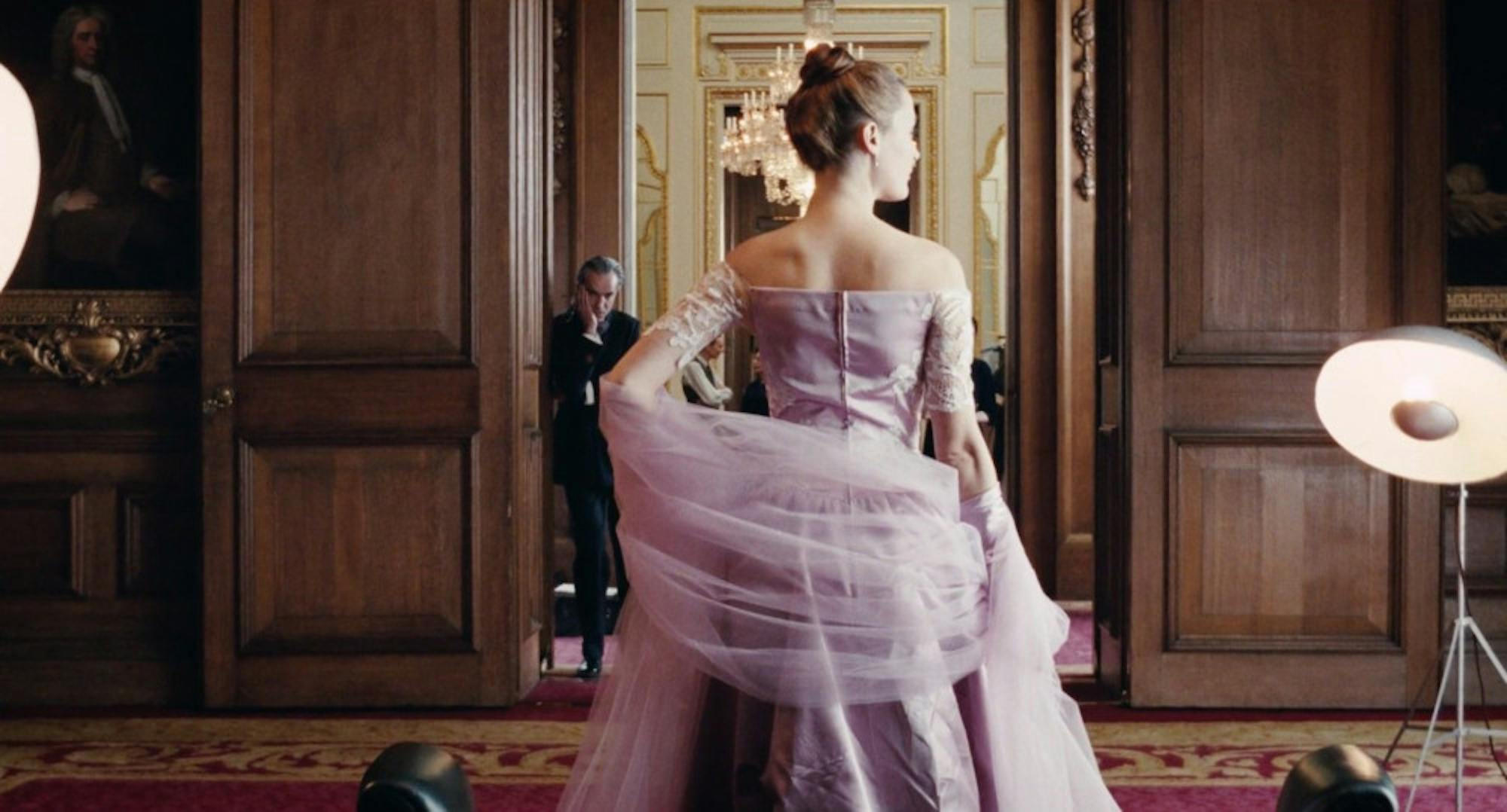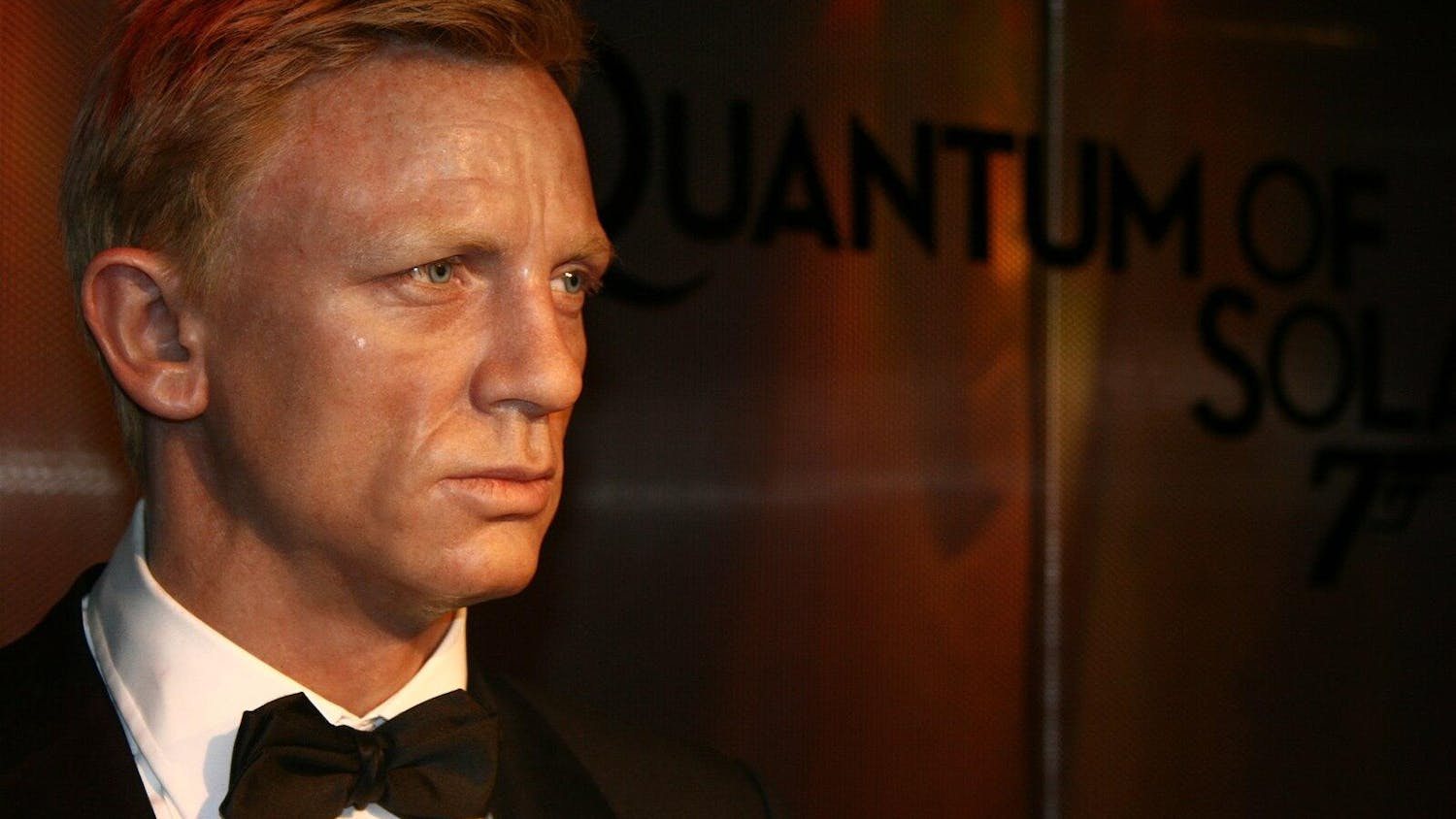On its surface, Paul Thomas Anderson’s “Phantom Thread” (2017) is an elegant, sumptuous period piece, one that promises to envelop you in the distant world of a high-society designer in post-War London. From Mark Bridges’ couture costume design to Jonny Greenwood’s lush orchestral score, the film’s basic elements add up to something that looks familiar: a historical romantic drama that will make you swoon, cry or both. But in the end, it’s all a ruse. Like its title suggests, “Phantom Thread” is ghostly and cold, operating more like a Hitchcock horror than any Joe Wright romance the trailer may have tricked you into believing it was. Anderson’s dark wit shines throughout; although the film’s final payoff (after 130 minutes of cringing anxiety and tension) isn’t clean or entirely satisfying, it’s hard not to marvel at the the ambition and sophistication of the filmmaking as a whole.
The inimitable Daniel Day-Lewis stars as Reynolds Woodcock, a Charles James-inspired couturier who designs dresses for the most sophisticated and wealthy of women, including London society grand dames and European princesses. Woodcock works, sketchbook or needle always in hand, out of the five-story townhouse where he lives with his sister, Cyril (Lesley Manville), and a rotation of younger women. Whether these women are girlfriends, muses or pets, it’s hard to say exactly, but the introduction of Alma (Vicky Krieps), a waitress Woodcock meets in a country hotel, seems to halt this rotation and challenge him in a way he’s never been challenged before.
Something is clearly off — so off it’s like it was never there — from the first time we see Woodcock in his fortress of a townhouse. While he sits at the breakfast table with his tea and work, the young woman sitting opposite him looks forlorn and begs for his attention. “I cannot start my day with a confrontation. I simply have no time for confrontations,” he shoots back. After she leaves the room, Woodcock plainly asks Cyril to get rid of the girl by breaking up with her for him. This clearly isn’t the first time he’s made this request, and Cyril obliges. In a much later scene, after Alma has prepared a private dinner for Woodcock and he openly rejects it, he asks, “What are you waiting for?” She replies, “For you to get rid of me.”
These scenes, from their twisted humor to their mutual interest in food and dining and the dark implication of the phrase “get rid of,” establish so much of what is essential to “Phantom Thread.”Woodcock is particular and exacting, constantly acting without a shred of empathy for those around him. These people all happen to be women, with whom he has a complex and tumultuous relationship; Woodcock reveres his dead mother, so much that he has a lock of her hair sewn into the lining of his jacket. His sister, whom he calls his “old so-and-so,” operates more like a wife and partner than anything, while his girlfriends like Alma only appear to receive true love and affection when they nurture him like a child. It’s all very Freudian and very Hitchcock; the film has a clear artistic and spiritual connection to Hitchcock’s “Rebecca” (1940), another film about a powerful man plucking a young woman from obscurity and the resulting psychic torture she endures. There’s even the shared interest in whether the dead watch over the living, as the “ghosts” of dead, ideal women appear in both films. Cyril is a dead ringer for Rebecca’s Mrs. Danvers, although Lesley Manville gets more juicy, cutting more one-liners than Hitchcock’s maid ever did.
The fascination with food in “Phantom Thread” is impossible to overlook and ties seamlessly into its larger exploration of relationships. Expert sound design and mixing from Christopher Scarabosio manages to make food like toast and butter particularly audible, creating near-constant tension that adds to both the horror and comedy angles of the film. Alma lovingly calls Woodcock a “hungry boy” when she wants to remind them of how they met, and the squeamishly sexual and ominous undertones are a perfect complement to her use of mushrooms throughout the movie. Even after a year of films filled with food sex (à la the peach scene in 2017's “Call Me By Your Name” and grapefruiting in 2017's “Girls Trip”), this kind of tension around eating is most reminiscent of Christoph Waltz insisting that Melanie Laurent “wait for the cream!” in 2009’s “Inglourious Basterds.”
For such an intricately layered film, the acting almost seems like a footnote, although “Phantom Thread” would surely falter without its talented cast. Day-Lewis, Manville and Krieps imbue their characters with strength and style, making their arguments so fun to watch. Day-Lewis claims that “Phantom Thread” is his last film before he retires from acting, and if that’s the case it will be hard to unsee Reynolds Woodcock the next time we find the actor out in the real world. The character may not be iconic as Daniel Plainview in “There Will Be Blood” (2007), Paul Thomas Anderson’s other collaboration with Daniel Day-Lewis, but Woodcock shares more with our image of the actor as a talented and famously committed artist.
Despite its style and ultimate vision, the film falters in its third act, seemingly repeating scenes for emphasis but ultimately muddying any sense of satisfaction or catharsis the audience may crave after the nerve-wracking ride they’ve been taken on. “Phantom Thread” is also colder and more removed than Anderson’s deeply human early works like “Boogie Nights” (1997) and “Magnolia” (1999). But now, Anderson isn’t as interested in satisfaction as he is with teasing, probing and playing. “Phantom Thread” ends with a dark chuckle; whether you like it or not, you can’t help but shake your head and laugh along.
Paul Thomas Anderson's 'Phantom Thread' is a ghost in disguise

Summary
Anderson’s dark wit shines throughout "Phantom Thread," and although the film’s final payoff isn’t clean or entirely satisfying, it’s hard not to marvel at the the ambition and sophistication of the filmmaking as a whole.
4 Stars





